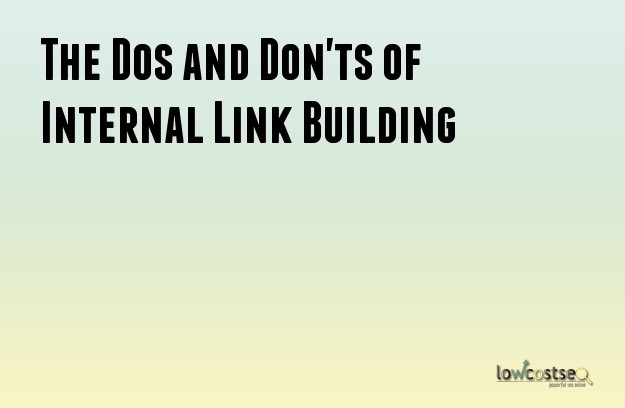
Dos and Don'ts of Internal Linking
Live links are all over the Internet, from websites and social media to PDFs and images. We use them to reference information and to drive traffic from one place to another, helping visitors find useful content on our website. You've probably already clicked several links before arriving on this page, but are links sometimes taken for granted? Although you should always be trying to get links from external sites to boost your search engine rankings, internal links should not be overlooked. An intelligent internal linking strategy will go a long way towards creating an SEO-friendly site and spreading what is known in the SEO world as 'link juice'. So, here are a few dos and don'ts of internal linking:
Use Descriptive Phrases as Your Anchor Text
The Anchor Text is the highlighted portion of your sentence that is clickable. A common mistake is to use a bland phrase such as “click here”, “read more here” or "visit website" as the anchor text. These are called generic keywords, and they should be avoided. Instead, use a specific phrase that describes and passes relevancy signals of the page that you are linking to. For example, if you are linking to this article with the phrase "internal linking", Google may think that this page is about internal linking and rank it higher in its search results than if you were to use a less relevant anchor text.
Link to Each Page within Your Website at Least Once
Each page within your website should be linked from another page at least once. A well-structured website should have a sufficient number of links that direct the users to the most popular pages, such as your homepage, about page or contact page. However, internal linking should not be something that you set up once and forget about. As your website expands and you add more pages to it, don't forget to link them to your older, more popular pages for better SEO results.
Don't Overwhelm Your Content with Too Many Links
Although you should try to have links to all of the pages within your website, don't go overboard and overwhelm your content with too many links. Linking should feel helpful and natural to your visitors. Choose the context for your links so that it makes sense to users as to why you are directing them to another place within your website.
Make Sure Your Links Actually Work
No matter how much time and effort you've put into choosing the content and placement of your links, all will be in vain if your visitors are being directed to dead or incorrect URLs. Make sure you double check each of your links to be certain that they direct your website visitor to the right page. Clicking on a link only to be taken to an error page does not provide a great user experience.
This list of dos and don'ts from the SEO industry’s best practice, has hopefully helped you to get a better grasp of internal linking and how you can use it to boost your website or blog's SEO success.
